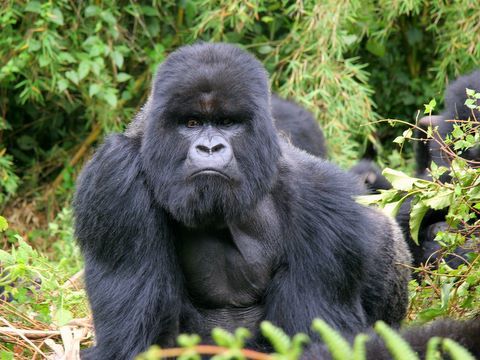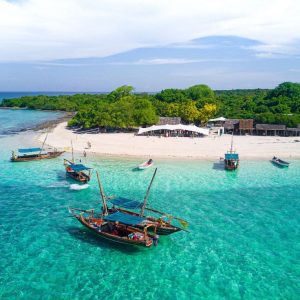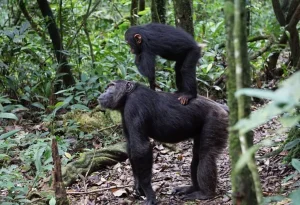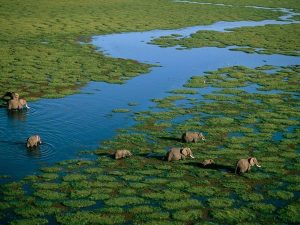Rwanda, the Land of a Thousand Hills, is one of the best places in the world to experience the rare and endangered mountain gorillas in their natural habitat. Gorilla trekking in Rwanda offers a once-in-a-lifetime opportunity to come face-to-face with these majestic creatures in the lush volcanic forests of Volcanoes National Park. As one of the most exclusive and well-managed wildlife activities in Africa, the Rwanda gorilla safari is highly sought after by travelers seeking authentic and unforgettable encounters.
What Is the Best Time to Go Gorilla Trekking in Rwanda?
The best time for gorilla trekking in Rwanda is during the dry seasons:
- June to September
- December to February
During these months, the trails in Volcanoes National Park are less muddy and more manageable, making trekking easier. Wildlife visibility is also better since vegetation is not too dense.
However, gorilla trekking is available year-round, and some travelers choose the rainy seasons (March–May and October–November) for fewer crowds and better photography opportunities due to lush scenery. Regardless of the season, Rwanda’s gorilla trekking experience remains unforgettable.
How Much Does a Gorilla Trekking Permit Cost in Rwanda?
Gorilla trekking in Rwanda is carefully regulated, and visitors must obtain a gorilla trekking permit issued by the Rwanda Development Board (RDB).
- The cost of a permit is USD 1,500 per person per trek.
- This fee includes the park ranger guide, one hour with a gorilla family, and conservation support.
- Discounts may apply for groups, conferences, or extended stays combining national parks.
Permits must be booked in advance due to high demand. Travelers can obtain them directly from RDB or through a licensed tour operator.
How Difficult Is Gorilla Trekking in Rwanda?
The difficulty of a gorilla trek in Rwanda depends on the specific gorilla family assigned and its location on the trekking day. Treks can last from 1 to 6 hours, depending on how far the gorillas have moved.
- Some gorilla families live near park boundaries, requiring shorter hikes.
- Others inhabit steeper terrain at higher altitudes, making the trek more strenuous.
Good physical fitness is recommended, but trekkers are supported by professional guides and porters who can carry bags or assist with challenging paths. Anyone aged 15 years and above can participate.
How Many Gorilla Families Are in Volcanoes National Park?
Volcanoes National Park is home to 12 habituated gorilla families available for trekking. These include well-known groups such as:
- Susa Group – one of the largest families, originally studied by Dian Fossey.
- Amahoro Group – known for its peaceful nature.
- Kwitonda Group – recognized for its long silverback history.
- Umubano and Agashya Groups – popular for family dynamics and unique interactions.
Each trekking group is limited to 8 visitors per day to ensure minimal disturbance and sustainable tourism.
What Is Included in a Rwanda Gorilla Safari Package?
A typical gorilla safari package in Rwanda includes:
- Gorilla trekking permits
- Accommodation near Volcanoes National Park
- Transportation (usually a 4×4 safari vehicle)
- Meals and bottled water
- Professional driver-guide services
- Optional cultural tours or city tours in Kigali
Some packages also include visits to nearby attractions such as the Iby’Iwacu Cultural Village, Musanze Caves, or golden monkey trekking. Prices vary based on accommodation class, ranging from budget to luxury safaris.
How Long Does a Gorilla Trek Take in Rwanda?
The length of a gorilla trek varies depending on the gorilla group’s movement. Treks generally last 2 to 6 hours, including hiking time. Once trekkers locate a gorilla family, they are allowed one hour of observation.
During this time, visitors can watch gorillas feeding, grooming, playing, and interacting in their natural habitat. This hour is strictly regulated to protect gorillas from human stress and disease transmission.
What Should You Wear for Gorilla Trekking in Rwanda?
Wearing the right gear ensures comfort and safety during the trek. Recommended clothing and gear include:
- Sturdy hiking boots with good grip
- Long-sleeved shirts and trousers (to protect from stinging nettles and insects)
- A waterproof jacket (as rains are common in mountain forests)
- Gaiters or long socks tucked into trousers to guard against insects
- A wide-brimmed hat and sunscreen
- Gardening gloves (for support on vegetation during steep climbs)
Carrying a backpack with bottled water, snacks, and a camera is advisable. Porters are available to assist with luggage.
Can You See Gorillas in Rwanda Without Trekking?
No, gorilla trekking is the only way to see mountain gorillas in Rwanda. Unlike zoos, the gorillas live freely in Volcanoes National Park and cannot be observed without hiking into their forest habitat. The trekking permit and guided experience ensure responsible and ethical encounters.
How Safe Is Gorilla Trekking in Rwanda?
Gorilla trekking in Rwanda is safe, thanks to strict security and conservation measures. Safety features include:
- Armed rangers who escort groups for protection against potential dangers.
- Experienced guides who ensure trekkers follow all rules.
- Well-maintained trekking trails.
Rwanda is politically stable, and its tourism sector is highly organized. Visitors should follow ranger instructions and maintain a 7-meter distance from gorillas to ensure safety for both humans and animals.
What Is the Difference Between Gorilla Trekking in Rwanda and Uganda?
Both Rwanda and Uganda offer world-class gorilla trekking, but there are differences:
- Permit Cost: Rwanda permits cost USD 1,500 while Uganda’s cost USD 800 (as of 2025).
- Accessibility: Volcanoes National Park is only 2 hours from Kigali, making Rwanda ideal for short trips. Uganda’s Bwindi Impenetrable Forest requires longer drives.
- Trekking Terrain: Rwanda’s terrain is volcanic and steep but often shorter. Uganda’s treks may be longer and denser due to thick forest.
- Tourism Style: Rwanda is positioned as a luxury gorilla trekking destination, while Uganda offers more budget-friendly options.
Travelers often choose based on budget, travel time, and the type of experience they seek.
Can You Combine Gorilla Trekking in Rwanda with Other Wildlife Safaris?
Yes, gorilla trekking in Rwanda can be combined with other safaris for a complete experience:
- Golden Monkey Trekking in Volcanoes National Park.
- Chimpanzee Tracking in Nyungwe Forest National Park.
- Big Five Safaris in Akagera National Park.
- Lake Kivu tours for relaxation and cultural experiences.
This combination allows visitors to enjoy primate encounters, savannah wildlife, and cultural heritage within one country.
Where to Stay During a Rwanda Gorilla Safari?
Accommodation near Volcanoes National Park ranges from luxury lodges to budget-friendly guesthouses. Popular options include:
- Luxury Lodges: Bisate Lodge, Singita Kwitonda Lodge, and One&Only Gorilla’s Nest.
- Mid-Range: Mountain Gorilla View Lodge, Da Vinci Gorilla Lodge.
- Budget: Kinigi Guesthouse, local community lodges.
Staying near the park headquarters in Kinigi ensures convenience for early morning treks.
Do You Need a Guide for Gorilla Trekking in Rwanda?
Yes, trekking without a guide is not permitted. Every group is accompanied by trained guides and trackers who locate gorillas, ensure safety, and interpret gorilla behavior for visitors. The presence of guides enhances both safety and educational value.
How Do You Book a Gorilla Trekking Permit in Rwanda?
Permits can be booked directly through the Rwanda Development Board (RDB) or via licensed tour operators. Booking through a tour operator is often easier as they handle logistics, accommodation, and transport. Due to limited availability, it is advisable to secure permits several months in advance.
Are Children Allowed to Go Gorilla Trekking in Rwanda?
No, children under the age of 15 years are not permitted to participate in gorilla trekking. This restriction ensures safety and reduces risks of disease transmission to gorillas. Families with younger children can consider cultural tours, nature walks, or other wildlife activities in Rwanda.
Conclusion
A Rwanda gorilla safari is one of the most extraordinary wildlife adventures in the world. With easy access from Kigali, exclusive trekking permits, and breathtaking encounters with mountain gorillas in Volcanoes National Park, Rwanda offers an unmatched safari experience. From understanding permit costs and trekking difficulty to choosing the best time to visit and planning accommodations, this guide provides all the information needed to prepare for a successful gorilla safari.
By following official guidelines and booking with licensed operators, travelers not only enjoy life-changing experiences but also contribute to the ongoing conservation of mountain gorillas — ensuring that these gentle giants continue to thrive for generations to come.




